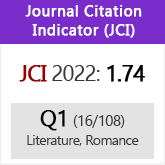Extraños compañeros de viaje: Cervantes y Mary Shelley
DOI:
https://doi.org/10.3989/anacervantinos.2017.013Palabras clave:
Cervantes, Mary Shelley, recepción del Quijote en Gran Bretaña, siglo XIXResumen
Miguel de Cervantes y Mary Shelley parecen, a priori, dos extraños compañeros de viaje. Pese a las evidentes divergencias entre la narrativa de ambos autores, la autora inglesa mostró un notable interés por la vida y obra de Miguel de Cervantes a lo largo de toda su carrera. Este artículo pretende ofrecer un retrato preciso de los intereses cervantinos de la autora de Frankenstein, rastreando con este fin la correspondencia personal de la autora inglesa, su producción narrativa, y finalmente, su contribución al cervantismo: la Life of Cervantes (1837) que Shelley publicaría en la Cabinet Cyclopaedia de Dyonisius Lardner.
Descargas
Citas
Borham, Miriam (2013). Quixotic Readers and Quixotic Writers: Cervantes's Daughters in British Narrative Fiction from Lennon to Austen. Tesis doctoral, Universidad de Salamanca.
De Armas, Frederick A. (2011). Don Quixote among the Sarracens: A Clash of Civilizations and Literary Genres. Toronto: University of Toronto Press. https://doi.org/10.3138/9781442696105
Donahue, Darcy (2009). «Cervantes as Romantic Hero and Author: Mary Shelley's Life of Cervantes», en J. A. G. Ardila (ed.), The Cervantean Heritage: Reception and Influence of Cervantes in Britain. London: Legenda, pp. 181-190.
El Saffar, Ruth (1975). Distance and Control in Don Quixote: A Study in Narrative Technique. Chapel Hill: University of North Carolina Press.
Garrett, Erin Webster (2000). «Recycling Zoraida: The Muslim Heroine in Mary Shelley's Frankenstein», Cervantes: Bulletin of the Cervantes Society of America. 20, 1, pp. 133-156.
Gordon, Scott Paul (2005). «Female Quixotism: Charlotte Lennox and Tabitha Tenney», en Darío Fernández Morera y Michael Hanke (ed.), Cervantes in the English Speaking World: New Essays. Barcelona: Reichenberger, pp. 127-147.
Gordon, Scott Paul (2006). The Practice of Quixotism. Postmodern Theory and Eighteenth Century Women's Writing. New York: Palgrave MacMillan. https://doi.org/10.1057/9780230601536
Moro, Alfredo (2013). «"Everything must have a beginning, to speak in Sanchean Phrase": Frankenstein (1818) de Mary Shelley como novela cervantina», en Carlos Mata Induráin (ed.), Recreaciones quijotescas y cervantinas en la narrativa. Pamplona: EUNSA, pp. 185-195. PMid:24711753 PMCid:PMC3884787
Moro, Alfredo (2015a). «Cervantes y lo fantástico: una reexaminación a través de la obra de Mary Shelley», en Marco Kunz y José Miguel Sardi-as (ed.), Paisajes góticos. De lo fantástico y sus alrededores. Binges: Orbius Tertius, pp. 11-23.
Moro, Alfredo (2015b). «Calderón de la Barca en la obra de Mary Shelley», Cuadernos de Ilustración y Romanticismo. 21, pp. 193-203. https://doi.org/10.25267/Cuad_Ilus_Romant.2015.i21.11
Moro, Alfredo (2016). Transformaciones de la novela cervantina en la narrativa inglesa y alemana del siglo XVIII. Alcalá de Henares: Ediciones Universidad Alcalá de Henares.
Moskal, Jeanne (2000). «To speak in Sanchean Phrase: Cervantes and the Politics of Mary Shelley's History of a Six Weeks' Tour», en B. T. Bennett y S. Curran (ed.), Mary Shelley in Her Times. Baltimore: John Hopkins University Press, pp. 18-37.
Palacio, Jean de (1969). Mary Shelley dans son oeuvre: Contributions aux études shelleyenes. Paris: Klincksieck.
Pardo, Pedro Javier (2004). «El Quijote femenino como variante del mito Quijotesco», en Actas del V Congreso Internacional de la Asociación de Cervantistas. [Madrid]: Asociación de Cervantistas, pp. 1627-1644.
Pardo, Pedro Javier (2005). «La heroína quijotesca en la novela inglesa del siglo XIX: Jane Austen, George Eliot y otros novelistas», en Diego Martínez Torrón (ed.), Cervantes y el ámbito anglo-sajón. Madrid: Sial, pp. 356-375.
Paulson, Ronald (1998). Don Quixote in England: The Aesthetics of Laughter. Baltimore: The Johns Hopkins University Press.
Pawl, Amy (2000). «Femenine Transformations of the Quixote in Eighteenth-Century England: Lennox's Female Quixote and Her Sisters», en Barbara A. Simerka y Christopher Weimer (ed.), Echoes and Inscriptions: Comparative Approaches to Early Modern Spanish Literatures. Lewisburg, PA: Bucknell University Press, pp. 142-159.
Pollin, Burton R. (1964). «William Godwin's Fragment of a Romance», Comparative Literature. XVI, pp. 43-44. https://doi.org/10.2307/1769882
Porter, Laurence (2005). Women's Vision in Literature. The Emphatic Community. Westport: Praeger.
Sánchez Jiménez, Antonio (2016). «Introducción», en Cervantes y Lope. Vidas Paralelas. Barcelona: Calambur, pp. 13-35.
Todorov, Tzvetan (2009). Introducción a la literatura fantástica. México D. F.: Ediciones Coyoacán.
Vargo, Lisa (ed.) (2002). Mary Shelley's Literary Lives and Other Writings. Vol. 2. Spanish and Portuguese Lives. London: Pickering and Chatto.
Descargas
Publicado
Cómo citar
Número
Sección
Licencia
Derechos de autor 2017 Consejo Superior de Investigaciones Científicas (CSIC)

Esta obra está bajo una licencia internacional Creative Commons Atribución 4.0.
© CSIC. Los originales publicados en las ediciones impresa y electrónica de esta Revista son propiedad del Consejo Superior de Investigaciones Científicas, siendo necesario citar la procedencia en cualquier reproducción parcial o total.Salvo indicación contraria, todos los contenidos de la edición electrónica se distribuyen bajo una licencia de uso y distribución “Creative Commons Reconocimiento 4.0 Internacional ” (CC BY 4.0). Puede consultar desde aquí la versión informativa y el texto legal de la licencia. Esta circunstancia ha de hacerse constar expresamente de esta forma cuando sea necesario.
No se autoriza el depósito en repositorios, páginas web personales o similares de cualquier otra versión distinta a la publicada por el editor.














